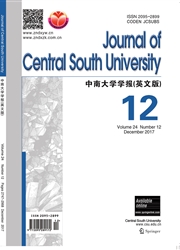

 中文摘要:
中文摘要:
An optimization model and its solution algorithm for alternate traffic restriction(ATR) schemes were introduced in terms of both the restriction districts and the proportion of restricted automobiles. A bi-level programming model was proposed to model the ATR scheme optimization problem by aiming at consumer surplus maximization and overload flow minimization at the upper-level model. At the lower-level model, elastic demand, mode choice and multi-class user equilibrium assignment were synthetically optimized. A genetic algorithm involving prolonging codes was constructed, demonstrating high computing efficiency in that it dynamically includes newly-appearing overload links in the codes so as to reduce the subsequent searching range. Moreover,practical processing approaches were suggested, which may improve the operability of the model-based solutions.
 英文摘要:
英文摘要:
An optimization model and its solution algorithm for alternate traffic restriction(ATR) schemes were introduced in terms of both the restriction districts and the proportion of restricted automobiles. A bi-level programming model was proposed to model the ATR scheme optimization problem by aiming at consumer surplus maximization and overload flow minimization at the upper-level model. At the lower-level model, elastic demand, mode choice and multi-class user equilibrium assignment were synthetically optimized. A genetic algorithm involving prolonging codes was constructed, demonstrating high computing efficiency in that it dynamically includes newly-appearing overload links in the codes so as to reduce the subsequent searching range. Moreover,practical processing approaches were suggested, which may improve the operability of the model-based solutions.
 同期刊论文项目
同期刊论文项目
 同项目期刊论文
同项目期刊论文
 Multi-commodity flow and multi-period equilibrium model of supply chain network with postponement st
Multi-commodity flow and multi-period equilibrium model of supply chain network with postponement st 期刊信息
期刊信息
